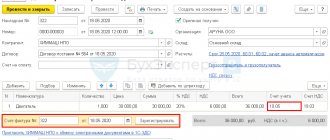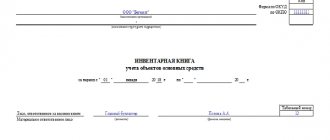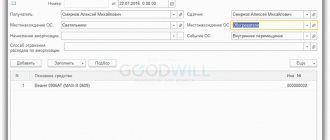What it is
According to the new federal standard, approved by Order of the Ministry of Finance No. 257n dated December 31, 2016, the residual value of fixed assets is an indicator of property assets in the current period.
It is formed after deducting depreciation charges and impairment losses. According to accounting standards, the residual value of fixed assets is determined as the accounting price for a specific date (end of the reporting period) - the original price reduced by the amount of accrued depreciation. Knowing the value of assets by balance, management sees the degree of their moral and physical deterioration and, accordingly, their efficiency of use. This allows you to plan the current renewal of the institution’s material and property funds.
Signs of initial and residual value
Non-current assets are characterized by various types of valuation, such as initial and residual value. The initial price is understood as the price that is paid for the fixed asset at the time of its acquisition. It is determined by a number of characteristics, which together form the price of the property:
- the direct price of the fixed asset itself;
- transportation costs;
- taxes, customs duties and duties;
- estimated cost of services for commissioning equipment.
The initial estimate is a constant value. It remains unchanged from the moment of acquisition and registration of the fixed asset and for the entire period of its use, except in cases of revaluation of the asset (revaluation or discount), its modernization or liquidation.
Residual value is a variable value. It decreases monthly as a result of depreciation charged on the original price. This is an indicator that is necessary to determine the current technical and moral condition of the main property.
The initial assessment is the indicator by which an object is accepted for accounting, and the residual assessment is a value characterizing the condition of the object during the period of its use.
Results
In accounting, the disposal of fixed assets is reflected by entries for writing off its original cost and depreciation, which form the residual value of the object in accounting.
When selling a fixed asset at a loss, it is important to take into account temporary differences arising in tax accounting, the appearance of which is due to the presence of different legally established approaches to reflecting the results of disposal. You can find more complete information on the topic in ConsultantPlus. Free trial access to the system for 2 days.
Methods for calculating residual value
The value of the object by balance is calculated monthly - as of the time of reporting, based on the results of the inventory, or at the end of the period determined by the accountant. In addition to the initial and residual costs, replacement costs are also distinguished. It is determined only for those objects for which revaluation was organized at the reporting date.
Here is a formula that shows how to calculate the residual value of fixed assets:
In the formula:
- OSB(B) - initial, replacement cost. When using this formula to determine the operating cost, the organization does not have the right to choose between the initial and replacement cost. The replacement value is used if a revaluation was previously carried out for specific fixed assets, which determined the replacement value of the assets. In accordance with clause 15 of PBU 6/01, revaluation is carried out once a year as of December 31 of the reporting year;
- A is depreciation accrued at the reporting date.
Here's how to determine the residual value of fixed assets when calculating the indicator using analytical accounting accounts:
The debit of account 01 takes into account the initial and replacement cost, and the debit of account 02 takes into account the depreciation accumulated on the calculation date. To make correct calculations, from the aggregate data of account 02, it is necessary to subtract the depreciation that was accrued on the funds accounted for in account 01, since the Kt of account 02 also takes into account the depreciation of fixed assets carried out under 03 “Income-bearing investments in material assets” (Order of the Ministry of Finance No. 94n dated October 31, 2000).
Depreciation charges are determined for all types of fixed assets. The rules for their calculation are enshrined in PBU 6/01. Depreciation for intangible assets is calculated in accordance with the procedure established by PBU 14/2007.
Estimation of residual value
The decision to revaluate the main assets is made by management. Revaluation is carried out once a year, but not more often, and only for assets that belong to the enterprise as a property. This is not a mandatory procedure; the decision is made voluntarily. The rule applies: if the revaluation has not been carried out previously, but was organized once in the institution, then it will have to be carried out regularly. The procedure is organized at the end of the billing period - year (as of December 31).
As a result of the revaluation, the amount of recovery is determined. The replacement cost of a fixed asset is the new valuation of a particular asset after it has been revalued.
To carry out revaluation, the manager issues an order that lists homogeneous objects that need revaluation. The basis for calculation is the current value of property assets. When revaluing objects, the accountant must perform the following actions:
- recalculate the current cost of the operating system;
- calculate the updated depreciation amount;
- reflect new amounts in accounting;
- enter the amount of additional valuation into additional capital;
- reflect the resulting markdown as other expenses.
The results of the procedure are entered into the balance sheet in a separate line.
How to take into account the costs of maintaining and repairing fixed assets
Amounts spent by the company on current or major repairs of fixed assets are written off as other expenses for the period in which they were made. Another option is possible: create a reserve for upcoming OS repairs.
In practice, difficulties arise due to the fact that inspectors regard current repairs as modernization (reconstruction, technical re-equipment, completion or additional equipment). The cost of such work is not considered current expenses, but is included in the initial cost. And this, in turn, increases the tax base and the amount of income tax. Therefore, it is very important for an accountant to prove and document that repairs written off as expenses are not modernization, additions, etc.
Use in accounting
To calculate property tax, the residual value of fixed assets is simply necessary: it serves as the basis for calculating the annual average for the reporting and previous periods. The calculated value is used for:
- carrying out purchase and sale transactions and property exchanges and resolving property disputes;
- issuing loans secured by property;
- calculating the amount of insurance amounts;
- carrying out bankruptcy of an organization;
- restructuring of the enterprise's existing debt, etc.
Those institutions in which the total residual value of assets exceeds the established limit of 150 million rubles are not entitled to apply the simplified taxation system (clause 16, clause 3, article 346.12 of the Tax Code of the Russian Federation).
An example of calculating property taxes in 2021
Let us give an example of calculating corporate property tax based on the average annual cost.
Example condition
| Reporting date | Residual value (RUB) |
| As of 01/01/2019 | 2500000 |
| As of 02/01/2019 | 2225000 |
| As of 03/01/2019 | 2150000 |
| As of 04/01/2019 | 2700000 |
| As of 05/01/2019 | 2550000 |
| As of 06/01/2019 | 2400000 |
| As of 07/01/2019 | 2250000 |
| As of 08/01/2019 | 2100000 |
| As of 09/01/2019 | 1950000 |
| As of 10/01/2019 | 1800000 |
| As of 11/01/2019 | 1650000 |
| As of 12/01/2019 | 1500000 |
| As of 12/31/2019 | 1350000 |
Solution
Step 1. Calculate the average annual value of the property
(2500000 + 2225000 + 2150000 + 2700000 + 2550000 + 2400000 + 2250000 + 2100000 + 1950000 + 1800000 + 1650000 + 1500000 + 1350000)/13 = 20 RUR 86,538.46
Step 2. Calculate the annual tax amount
For our example, let's take the maximum property tax rate - 2.2%.
2086538.46 rub. x 2.2% = 45903.85 rub.
Since taxes are paid in full rubles (clause 6 of Article 52 of the Tax Code of the Russian Federation), the payer, taking into account rounding, must transfer 45,904 rubles to the budget. corporate property tax.
Step 3. Calculate the average value of the property to calculate the advance amount for the first quarter
(2500000 + 2225000 + 2150000 + 2700000)/4 = 2393750 rub.
Step 4. Calculate the advance payment for the first quarter
2393750/4 x 2.2% = 13166 rub.
Step 5. Calculate the average value of the property to calculate the amount of the advance for six months
(2500000 + 2225000 + 2150000 + 2700000 + 2550000 + 2400000 + 2250000)/7 = 2396428.57 rub.
Step 6. Calculate the advance payment for the six months
2396428.57/4 x 2.2% = 13180 rub.
Step 7. Calculate the average value of the property to calculate the amount of advance payment for 9 months
(2500000 + 2225000 + 2150000 + 2700000 + 2550000 + 2400000 + 2250000 + 2100000 + 1950000 + 1800000)/10 = 2262500 rub.
Step 8. Calculate the advance payment for 9 months
2262500/4 x 2.2% = 12444 rubles.
Step 9. Calculate the amount of tax to be paid additionally to the budget at the end of the year
45904 – (13166 + 13180 + 12444) = 7114 rubles.
If you find an error, please select a piece of text and press Ctrl+Enter.
Which accounting accounts to use
The value of the property valuation by balance is also determined by the indicators of the accounting account - by comparing the balances of certain accounts. The accountant must create a turnover sheet for accounts 01 and 02 for a certain period and, using the totals of turnover, calculate the required indicator.
Account 01 “Fixed Assets” is used in accounting to reflect the initial cost of fixed assets. Account 01 takes into account all costs for the acquisition, production and commissioning of the property. These expenses are reflected in the debit of account 01. Therefore, to calculate the residual value, it is necessary to determine the debit balance for a specific date.
Account 02 “Depreciation of fixed assets” is used to record accounting data for depreciation charges. Depreciation accrued on property is carried out on the loan and accumulates the total of deductions until the moment the fixed assets are written off from the balance sheet. To calculate the residual value, the accountant must identify the total credit turnover for a certain number.
We described in detail the formula and procedure for calculating the difference between the turnover of 01 and 02 accounting registers earlier. The action itself is performed as follows: OST = balance for Dt 01 – balance for Kt 02.
IMPORTANT!
Depreciation is charged not only on property assets according to the 01 accounting register, but also on assets formed in the form of profitable investments in material assets. When calculating, it is necessary to highlight depreciation accrued only on fixed assets.
Here's what the residual value of fixed assets includes on the balance sheet:
- line 1150 - residual value of property assets recorded in account 01;
- line 1160 is a similar value for profitable investments in material assets.
The balance value for groups of intangible assets of an enterprise is also calculated. It is necessary to generate turnover in accounts 04 “Intangible assets” and 05 “Amortization of intangible assets”. In account 04, information about the original price of intangible assets is displayed, and in account 05 the accrued depreciation is indicated. The residual value for intangible objects is calculated as the difference between the total for debit turnover 04 and the total balance for credit 05.
If an organization decides to sell property, when selling it, the amount of residual value must be indicated, which is written off separately from depreciation charges. Write off not only the value of the balance, but also the original cost. The documentary basis for the transaction is a certificate calculating the residual value of the sold property. To write off fixed assets from the balance sheet upon sale, you must open a subaccount 01.11 - “Disposal” for account 01. It reflects the sales price, which is different from the purchase price of the property.
What wiring to use
Let's present the main accounting records in the table:
| Wiring | Contents of operation | A document base |
| Dt 140110172 Kt 110134410 | Write-off of OST for a budgetary institution | Act on write-off of OS-4 and accounting certificate-calculation |
| Dt 91.2 Kt 01.2 | Write-off for commercial and non-profit organizations | Write-off act, certificate-calculation |
| Dt 02 Kt 01 | Write-off of accumulated depreciation for an object | Calculation of depreciation charges |
Features of simplified taxation
For a simplified taxation system, it is allowed to account for income from sales at the time of receipt of revenue. For OSNO, as a result of the write-off of property, both profit and loss appear. The loss must be reflected in accounting by posting Dt 99 Kt 91. The resulting loss is taken into account as part of the costs evenly - in equal parts over a certain billing period. The time period in this case is a month. To derive the accounting period, the accountant performs the following actions: subtracts the actual period of its use in the organization from the planned service life of the property (calculated in months).
The period changes taking into account decreasing or increasing factors calculated on the basis of the depreciation premium. If the accelerated method of calculating depreciation was used, then the specialist is recommended to reduce the calculation period (letter of the Ministry of Finance No. 03-03-06/1/511 dated 08/04/2009). If a reduction factor was used, the billing period, on the contrary, increases (letter of the Ministry of Finance No. 03-03-06/2/280 dated November 23, 2011).
Benefits for paying property taxes in 2021
For some types of property, benefits are applied that exempt the organization from paying tax (see Article 381 of the Tax Code of the Russian Federation):
- the organization is part of a free economic zone, belongs to the religious sphere or the penal system;
- property of Skolkovo residents, prosthetic and orthopedic enterprises, advocacy and legal consultations, state research centers;
- the organization produces pharmaceutical products;
- no longer need to pay movable property tax.
Regions can establish their own benefits, reduce rates and exempt from paying taxes (clause 2 of Article 372 of the Tax Code of the Russian Federation), so check the information on benefits and rates in your region on the official website of the tax service.





